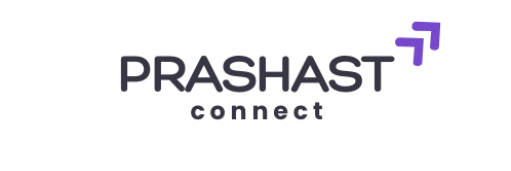How to Use Flashcards Effectively: A Comprehensive Guide
Understanding the Purpose of Flashcards
Flashcards are a powerful tool for learning and memory retention. They work by leveraging active recall, a process where you actively retrieve information from memory, which strengthens neural connections. Understanding how to use flashcards effectively can make a significant difference in your study routine.
Flashcards are versatile and can be used for a variety of subjects, from vocabulary building in a new language to memorizing historical dates or scientific formulas. Their portability and simplicity make them a favorite among students and professionals alike.
Research shows that active recall, the core principle behind flashcards, improves memory retention by up to 50% compared to passive review methods like re-reading notes. This makes flashcards an essential tool for anyone looking to learn efficiently.
By understanding the purpose of flashcards, you can tailor your approach to maximize their benefits. Whether you’re preparing for exams or learning a new skill, knowing how to use flashcards effectively is key to success.
Choosing the Right Materials for Your Flashcards
The materials you choose for your flashcards can impact their effectiveness. Traditional paper flashcards are a popular choice, but digital flashcards have gained traction due to their convenience and features like spaced repetition algorithms.
When selecting materials, consider your learning style. If you prefer tactile learning, physical flashcards may be more effective. On the other hand, apps like Anki or Quizlet offer customizable digital flashcards that can be accessed on the go.
High-quality materials ensure durability and usability. For physical flashcards, opt for sturdy index cards and use colorful markers to make them visually appealing. For digital options, choose platforms that allow multimedia integration, such as images and audio.
Ultimately, the right materials will depend on your preferences and study goals. Experiment with different options to find what works best for you and enhances how to use flashcards effectively.
Organizing Information for Maximum Retention
Effective organization is crucial when creating flashcards. Start by breaking down complex topics into smaller, manageable chunks. This makes it easier to focus on one concept at a time.
Use categories or themes to group related flashcards together. For example, if you’re studying biology, you could create separate stacks for anatomy, physiology, and genetics. This approach helps in structuring your learning process.
Another tip is to prioritize key information. Avoid overloading your flashcards with excessive details. Instead, focus on the most important points that you need to remember.
Organizing your flashcards thoughtfully not only saves time but also enhances how to use flashcards effectively by making your study sessions more productive.
Designing Flashcards for Clarity and Simplicity
Clarity and simplicity are essential when designing flashcards. Use concise language and avoid cluttering the card with too much information. A clean design ensures that the focus remains on the key concept.
For example, if you’re learning a new language, write the word in the target language on one side and its translation on the other. Adding a simple image can also aid in memory retention.
Use large, legible fonts and contrasting colors to make the text stand out. This is especially important for visual learners who rely on clear visuals to absorb information.
By keeping your flashcards simple and easy to read, you enhance their usability and ensure that you’re learning how to use flashcards effectively.
Using Active Recall to Strengthen Memory
Active recall is the cornerstone of effective flashcard use. It involves testing yourself by trying to remember the answer before flipping the card. This process strengthens memory pathways and improves retention.
For instance, if you’re studying historical dates, look at the event on one side of the card and try to recall the date before checking the answer. This active engagement reinforces your learning.
Studies have shown that active recall is more effective than passive review methods. By challenging your brain to retrieve information, you create stronger neural connections.
Incorporating active recall into your study routine is a proven way to learn how to use flashcards effectively and achieve better results.
Incorporating Spaced Repetition for Long-Term Learning
Spaced repetition is a technique that involves reviewing flashcards at increasing intervals over time. This method helps transfer information from short-term to long-term memory.
Apps like Anki use algorithms to schedule reviews based on your performance. If you answer a card correctly, it will appear less frequently. If you struggle with a card, it will show up more often.
For example, if you’re studying medical terminology, spaced repetition ensures that you revisit challenging terms until they are firmly embedded in your memory.
By combining spaced repetition with active recall, you can master how to use flashcards effectively and retain information for the long term.
Mixing Up Topics to Avoid Overloading
Studying a single topic for too long can lead to cognitive overload and reduced efficiency. Mixing up topics keeps your brain engaged and prevents fatigue.
For example, if you’re preparing for a comprehensive exam, alternate between subjects like math, science, and history. This approach keeps your study sessions dynamic and interesting.
Interleaving different topics also enhances learning by forcing your brain to switch between concepts. This improves your ability to apply knowledge in diverse contexts.
By varying your study material, you can avoid burnout and learn how to use flashcards effectively across multiple subjects.
Testing Yourself Regularly with Flashcards
Regular self-testing is a critical component of effective flashcard use. It helps you identify areas of weakness and track your progress over time.
Set aside dedicated time each day to review your flashcards. Consistency is key to reinforcing your memory and building confidence in your knowledge.
For example, if you’re studying for a language proficiency test, test yourself on vocabulary daily. This habit ensures steady improvement and readiness for the exam.
By testing yourself regularly, you can refine your study strategy and master how to use flashcards effectively.
Tracking Progress and Adjusting Your Approach
Tracking your progress is essential for optimizing your study routine. Keep a record of the flashcards you struggle with and focus on improving those areas.
Use tools like spreadsheets or apps to monitor your performance. This data can help you identify patterns and adjust your approach accordingly.
For instance, if you notice that you’re consistently forgetting certain concepts, spend extra time reviewing those flashcards. This targeted effort ensures continuous improvement.
By tracking your progress and making adjustments, you can learn how to use flashcards effectively and achieve your learning goals.
Combining Flashcards with Other Study Techniques
While flashcards are a powerful tool, combining them with other study techniques can enhance your learning experience. Techniques like mind mapping, note-taking, and group discussions complement flashcard use.
For example, after reviewing flashcards on a topic, create a mind map to visualize the connections between concepts. This reinforces your understanding and retention.
Group study sessions can also be beneficial. Share your flashcards with peers and quiz each other. This collaborative approach adds variety to your study routine.
By integrating flashcards with other methods, you can maximize their effectiveness and truly master how to use flashcards effectively.
Conclusion
Flashcards are an invaluable tool for learning and memory retention. By understanding their purpose, choosing the right materials, and organizing information effectively, you can unlock their full potential. Techniques like active recall, spaced repetition, and regular self-testing further enhance their impact.
Remember to mix up topics, track your progress, and combine flashcards with other study methods for a well-rounded approach. With these strategies, you’ll not only learn how to use flashcards effectively but also achieve your academic and professional goals.
Start implementing these tips today and experience the transformative power of flashcards in your learning journey.
FAQs
- What is the best way to use flashcards for studying?
- The best way to use flashcards for studying is by leveraging active recall and spaced repetition. These techniques ensure effective memory retention and long-term learning.
- How often should I review my flashcards?
- Review your flashcards regularly, ideally daily or every few days, depending on the complexity of the material. Spaced repetition apps can help schedule reviews for optimal retention.
- Can flashcards be used for all subjects?
- Yes, flashcards are versatile and can be used for a wide range of subjects, including languages, science, history, and more. The key is to design them effectively for the specific subject matter.
- Are digital flashcards better than physical ones?
- Both digital and physical flashcards have their advantages. Digital flashcards offer convenience and features like spaced repetition, while physical flashcards provide a tactile learning experience.



